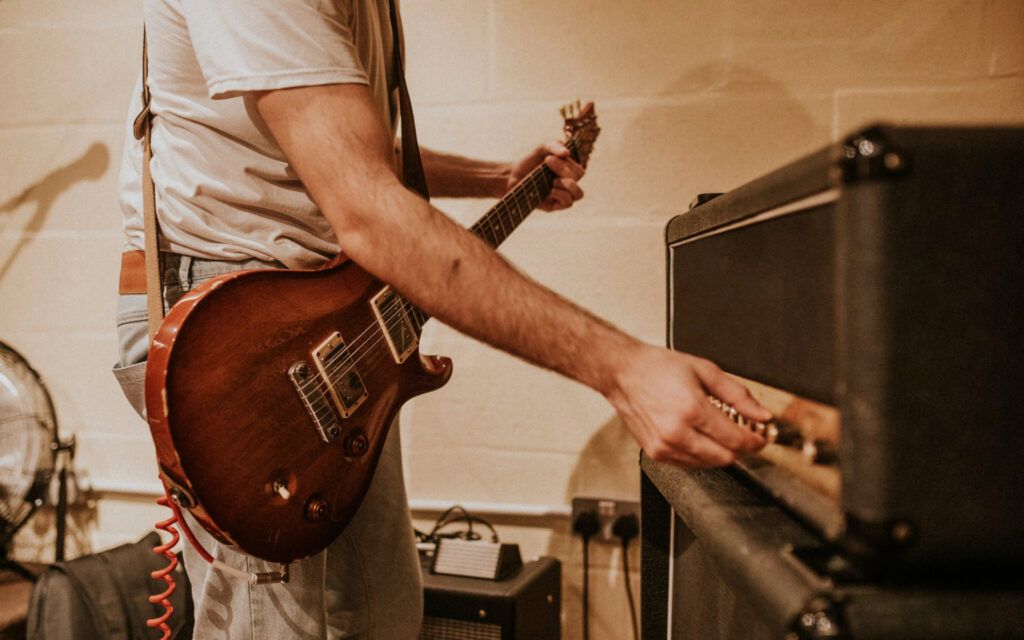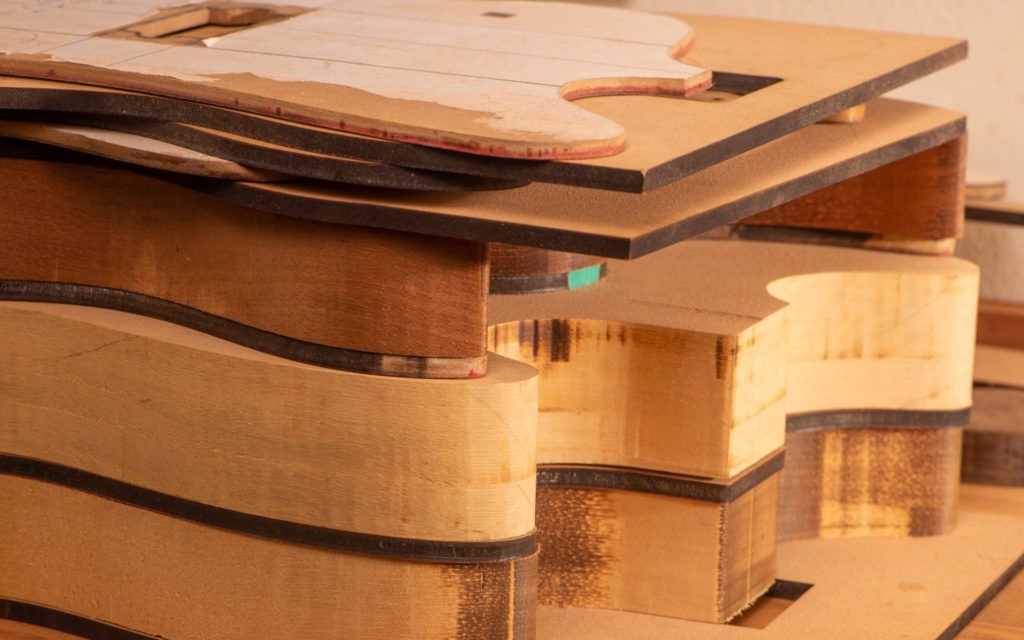Metal screaming is one of the most distinctive and unique vocal styles across any music genre. There’s a common misconception that a metal scream is about aggression rather than technique, but it takes a lot of skill.
Like any vocal style or musical instrument, learning to metal scream is a process that requires consistent practice. If you’re willing to start with the fundamentals and gradually develop your metal vocals, there’s no reason you can’t master this skill in time.
In this guide, I’ll provide you with a series of tried and tested methods that you can use to gradually improve your metal scream.
How to Metal Scream
Learning how to do metal vocals requires you to consistently practice three key steps. Firstly, you need to develop a suitable warm-up routine that protects your vocal cords and prevents straining them. Then you need to sing from your diaphragm while controlling your breath, and finally, you must practice guttural growling.
Step 1 – Vocal Warm-Up
Every singer should have a vocal warm-up routine that they perform before they sing, but this is especially important if you’re attempting metal screaming techniques.
In the same way that an athlete must gradually warm up their muscles before undertaking physical activity, a vocalist needs to prepare their vocal cords, diaphragm, and the various muscles that are engaged when they sing.
Metal screaming is an intense vocal technique, so you must develop a suitable warm-up to avoid injury. Here are some reliable exercises you can use.
Hydration
Your vocal warm-up routine for metal screaming begins before you’ve even sung a note.
You must be well hydrated before attempting this technique. Vocal cords are much less likely to be strained or injured if they are well lubricated, so drinking water before starting is essential.
Some vocalists like to make a warm tea with lemon, honey, and ginger to soothe their throat before singing. You could also use a cup of water with a pinch of baking soda and a teaspoon of salt for this purpose.
It’s advisable to avoid drinks that contain dairy or high amounts of sugar before singing, as these can have an adverse effect on your vocal cords.
Gargling your chosen beverage is a great way to loosen up your throat muscles and ensure that your vocal cords are well lubricated ready to attempt your metal singing techniques.
Breath Work
Proper breathing is incredibly important for metal singing. Beginning your vocal warm-up with some breathing exercises will help to expand your lungs to their maximum capacity, ensure that your body is oxygenized, and help you to relax, which paradoxically is beneficial for screaming!
A simple breathing exercise I use when beginning my vocal warm-up is the following:
- Inhale through your nose for 5 counts
- Hold your breath for 2 counts
- Exhale through your mouth for 7 counts
- Repeat for 5 cycles
Once you’ve completed the first round of 5 cycles, you can then increase the inhalation time to 6 seconds, and exhale for 8 seconds.
This exercise will help you to engage your diaphragm and prepare you for the vocal aspects of your warm-up for metal screaming.
Two Vowel Exercise
The next part of our warm-up is specifically designed to prepare your voice for the technique of a metal scream. As a pre-warning, this involves making some pretty strange noises so it’s best to do it somewhere private!
For this exercise, simply choose two vowels. As an example, we’ll go with the “ee” and “oh” sounds. Starting with two notes that are comfortably in your range, sing these sounds one after the other with no gaps until you need to inhale.
Then, inhale fully and repeat the exercise several times using higher and lower pitches.
While this may sound weird to any passers-by or housemates, it is a great warm-up exercise for metal screaming as it warms up all of your vocal cords in the lower and higher registers without putting them under any unnecessary strain.
Growling & Howling
The final exercise to warm up your voice in preparation for metal screaming requires you to growl in the lowest register of your vocal range, and howl in the upper register without moving into your head voice or falsetto.
When growling, you can use the “ow” sound, and when howling, the “oo” sound works well. Focus on keeping your growls as deep as possible, by controlling your breath and the shape of your mouth.
Your howls should be projected with maximum volume, almost breaking into a scream. If you feel any pain or tension when doing this, go back and repeat the previous vowel exercise to warm up your vocal cords further.
You should repeat this exercise for a couple of minutes until your voice feels sufficiently warmed up. Now it’s time to move on to the technique of metal screaming.
Step 2 – Metal Growl Fundamentals
I can’t stress the importance of warming up your voice before attempting to metal growl enough. If your vocal cords aren’t sufficiently warmed up, you will find the following exercises difficult and potentially dangerous.
The important thing to remember when learning to metal growl is that it won’t happen instantaneously. Like any advanced skill, you’ll need consistent practice and self-assessment to develop it.
Relax
Before you attempt a metal scream, you need to relax your neck muscles and throat. Guttural screams come from the lower part of the diaphragm, and the only way to access this area is by keeping the throat and mouth completely relaxed.
A good way to relax these parts of your body is by slowly raising your shoulders up towards your ears, then allowing them to drop with no resistance.
You can repeat this a few times, paying attention to how relaxed your throat and jaw muscles feel.
Mouth Shape
If you go to a professional vocal coach, one of the first things they’ll explain to you is how the shape of your mouth impacts both the tone, tuning, and dynamics of your singing voice.
When attempting to metal scream, your mouth should be open slightly with no resistance from your jaw muscles.
Let your mouth hang open so that you’re prepared to project from deep within your diaphragm.
Diaphragmic Breathing
Breathing from your diaphragm may seem a little unnatural at first, but you can easily develop the habit. This is essential for metal screaming, as it allows you to access all of your vocal power rather than relying on your vocal cords and potentially straining them.
Place your palms on your diaphragm, which is located under your chest. Then inhale fully and focus on pushing the air out of your diaphragm, without engaging your vocal cords or throat muscles.
An easy way to know whether you are breathing from your diaphragm is by feeling your abdomen tensing as you exhale. If your abdominal muscles are not tensing, you are breathing more from your upper chest and throat.
Death Growl Exhale
While exhaling from your diaphragm, you now need to add in some growling sounds like those you were making in the vocal warm-up.
It’s fine to exaggerate the growls so that they sound raspy and powerful. You’ll feel a sensation in your throat when doing this, which shouldn’t be painful if your voice is warmed up adequately.
Concentrate on continuing to exhale from deep in your diaphragm, then as the air comes up through your chest project the growl and try to sustain the sound until you need to exhale again.
Incorporating Lyrics
After practicing the growling exhale until you feel like you can consistently produce a raspy sound with plenty of power, you can now use this technique while singing lyrics.
If you have a metal song that you know the lyrics to and are familiar with the rhythm, you can attempt to sing the words using the growling technique.
As you practice doing this, your metal scream will slowly develop. At first, it may be difficult to generate the power to turn your growl into a full-blown scream, but the more you practice the more familiar you’ll become with the sensations you feel in your throat.
Other Essential Tips
Avoid Imitating Other Vocalists
When you first learn to metal scream, it can be tempting to try and imitate vocalists who use this technique. While this may be beneficial further down the line, initially I’d recommend focusing on developing your style that suits your voice.
Metal singers spend years perfecting their harsh vocals. Another person’s vocal range may be completely different from yours, and attempting to copy their vocals may prevent you from figuring out the limitations and strengths of your voice.
Also, if you try to imitate an accomplished metal singer’s scream, you may end up over-straining your voice. The vocal cords must be strengthened gradually, otherwise, they can be damaged if you over-exert yourself.
Practice Every Type of Metal Scream
Death metal vocals can be performed in a range of pitches and styles. When you practice the technique, spend some time experimenting with different tones, pitches, and dynamics.
It’s possible to develop your scream so that you can belt it out loudly, or produce the same sort of tone without the high volume. The more you attempt different styles of metal screaming, the more versatile your voice will become.
Consistency is Key
Unless you’re blessed with a natural heavy metal singing ability, or you’re a very fast learner, the chances are it will take time to develop this technique properly.
It’s important not to be disheartened if you can’t produce the scream that you’d like to at first. It may take weeks or even months of consistent practice to experience the moment of revelation when everything clicks into place and you produce a scream that sounds good.
Vocal exercises work gradually. You must monitor your progress, and be disciplined in your practice to ensure that you master metal screaming eventually.
Summary
After reading this detailed guide, you are now equipped with a solid warm-up routine that will preserve and protect your vocal cords before attempting to metal scream.
The exercises we’ve outlined will help you to develop your screaming technique gradually, starting from the fundamentals.
All you need to do is take some time each week to work on your metal singing skills and you will be able to perform the technique in a relatively short time without the risk of harming your voice.









